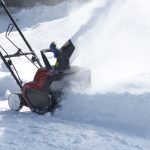In the first installment of repairing trees I discussed how to fix a girdled tree. I explained that a girdled tree is one that is experiencing 100 percent damage of the bark and how such a condition could kill the tree if not treated. The article gave details on what to do to save the tree.
In Part II of the series I will discuss how one repairs tree bark damage that is not as severe as girdling.
Tree Bark
First, a short explanation of the function of tree bark and why it is so important to fix it when damaged.
As explained in Part One of this series, the bark is like the skin of the tree. It covers and protects a section of a tree called the phloem layer. This is similar to the circulatory system of a human being. It allows the tree to transport energy and nutrients generated by the leaves to the rest of the tree.
So when the bark of a tree is scratched or torn, the phloem layer is also damaged. In most circumstances, the tree will survive unless it suffers about 100 percent damage, then it could die. This condition is referred to as girdling.
If the tree suffers less than 25 percent to 50 percent damage, then it will survive. However, the result of the injury could be lost leaves and dead branches. It the tree bark damage is greater than 50 percent, the life of the tree is in jeopardy and tree repair is necessary.
In any of these conditions, it is still imperative that the damage be treated.
Repairing Damaged Bark
It the bark has suffered a simple scratch, then experts suggest you wash the wound out with plain soap and water to get rid of the microorganisms that could cause disease. Afterwards, you can wash the wound with plain water. Do not cover the scratch so that it can be healed in the open air.
If the damage to the tree includes actual removal of bark, there are two methods of tree repair. You can reattach the lost bark or you can clean cut the wound.
The first thing to do if you’re using the reattachment of bark method is to gather as much of the lost bark as possible and use tape to secure the pieces back on to the tree. Make certain that you return the bark to the tree in the same direction as the undamaged bark that remains on the tree. This is necessary because the phloem layer transport nutrients in one direction. Take this action as soon as possible so that there is not enough time to lapse for the bark to die.
If you can’t retrieve or find some of the lost bark, then you need to use the clean-cut method of tree repair. In this case, you need to be certain that the damage heals cleanly. Sharp or uneven wounds interfere with the tree’s ability to transport nutrients. So you will need to clean cut the wound.
Cut an oval around the circumference of the injury as shallow and as close to it as possible. Cut so that the top and bottom of the wound are points of the oval. Do not cover. Instead, allow the wound to air heal.
(Next time: Part III – Repairing Ice and Storm Damaged Trees)







